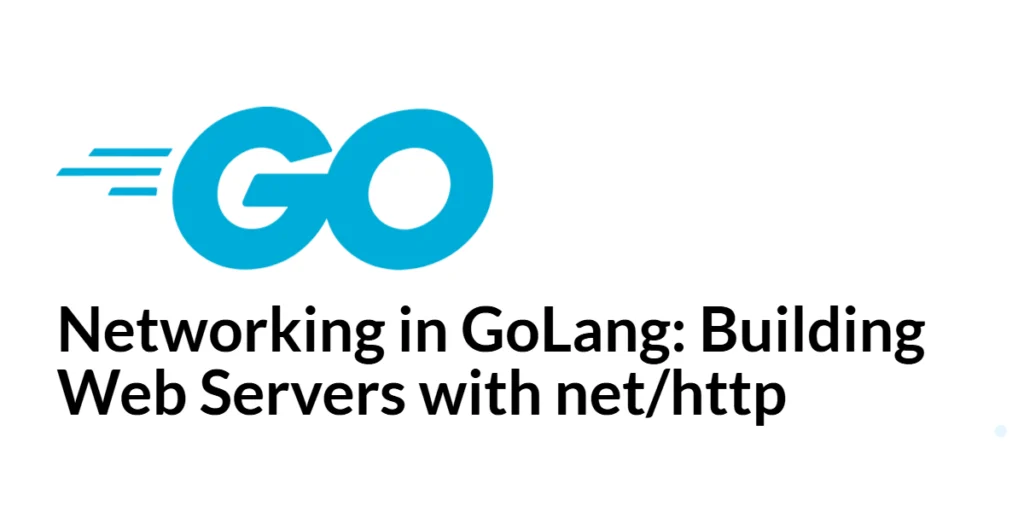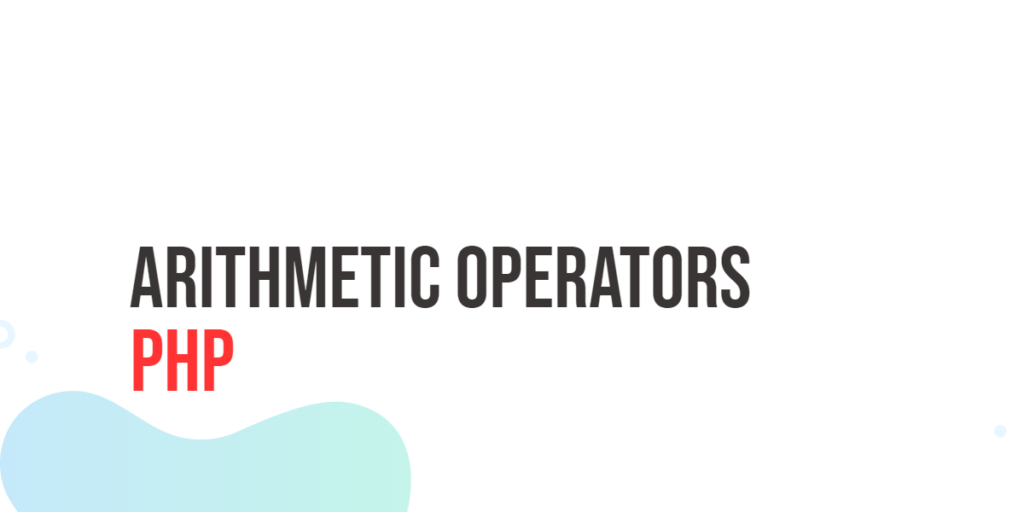Networking is a crucial aspect of modern applications, enabling communication between different systems and services over the internet or local networks. Web servers play a vital role in this landscape, serving as the backbone for web applications by handling client requests and delivering responses. GoLang, with its robust standard library, provides powerful tools for building efficient and scalable web servers.

with hands-on learning.
get the skills and confidence to land your next move.
Building web servers in GoLang using the net/http package is straightforward and highly efficient. The net/http package offers all the necessary functionalities for creating web servers, handling HTTP requests, serving static files, and much more. This article provides a comprehensive guide to building web servers in GoLang, covering everything from basic server setup to advanced topics like middleware and deployment. By the end of this article, you will have a solid understanding of how to create and manage web servers in GoLang.
Getting Started with net/http
Setting Up a Basic Web Server
To get started with building a web server in GoLang, you need to import the net/http package and define a simple HTTP handler function. This function will respond to incoming HTTP requests.
package main
import (
"fmt"
"net/http"
)
func helloHandler(w http.ResponseWriter, r *http.Request) {
fmt.Fprintln(w, "Hello, World!")
}
func main() {
http.HandleFunc("/", helloHandler)
fmt.Println("Server starting on port 8080...")
if err := http.ListenAndServe(":8080", nil); err != nil {
fmt.Println("Error starting server:", err)
}
}In this example, the helloHandler function writes “Hello, World!” to the HTTP response. The http.HandleFunc function registers the handler for the root path (“/”). The http.ListenAndServe function starts the web server on port 8080 and listens for incoming requests.
Handling HTTP Requests
Handling HTTP requests involves reading request data and writing responses. The http.Request object contains information about the request, while the http.ResponseWriter object is used to send responses.
package main
import (
"fmt"
"net/http"
)
func echoHandler(w http.ResponseWriter, r *http.Request) {
fmt.Fprintf(w, "Request Method: %s\n", r.Method)
fmt.Fprintf(w, "Request URL: %s\n", r.URL)
fmt.Fprintf(w, "Request Header: %v\n", r.Header)
}
func main() {
http.HandleFunc("/echo", echoHandler)
fmt.Println("Server starting on port 8080...")
if err := http.ListenAndServe(":8080", nil); err != nil {
fmt.Println("Error starting server:", err)
}
}In this example, the echoHandler function reads various parts of the request, such as the method, URL, and headers, and writes them to the response.
Creating Routes and Handlers
Defining Routes
Routes are URL paths that map to specific handler functions. The http.HandleFunc function is used to define routes and associate them with handlers.
package main
import (
"fmt"
"net/http"
)
func helloHandler(w http.ResponseWriter, r *http.Request) {
fmt.Fprintln(w, "Hello, World!")
}
func aboutHandler(w http.ResponseWriter, r *http.Request) {
fmt.Fprintln(w, "About Page")
}
func main() {
http.HandleFunc("/", helloHandler)
http.HandleFunc("/about", aboutHandler)
fmt.Println("Server starting on port 8080...")
if err := http.ListenAndServe(":8080", nil); err != nil {
fmt.Println("Error starting server:", err)
}
}In this example, two routes are defined: the root path (“/”) and the “/about” path. Each route is associated with a specific handler function.
Creating Handler Functions
Handler functions process incoming HTTP requests and generate responses. They are defined with the signature func(http.ResponseWriter, *http.Request).
package main
import (
"fmt"
"net/http"
)
func contactHandler(w http.ResponseWriter, r *http.Request) {
fmt.Fprintln(w, "Contact Page")
}
func main() {
http.HandleFunc("/contact", contactHandler)
fmt.Println("Server starting on port 8080...")
if err := http.ListenAndServe(":8080", nil); err != nil {
fmt.Println("Error starting server:", err)
}
}Here, the contactHandler function handles requests to the “/contact” path and responds with “Contact Page”.
Serving Static Files
Serving Static Files Using http.FileServer
To serve static files such as HTML, CSS, and JavaScript files, you can use the http.FileServer function, which creates a file server handler.
package main
import (
"net/http"
)
func main() {
fs := http.FileServer(http.Dir("./static"))
http.Handle("/static/", http.StripPrefix("/static/", fs))
http.ListenAndServe(":8080", nil)
}In this example, the http.FileServer function serves files from the “./static” directory. The http.StripPrefix function removes the “/static/” prefix from the URL path before passing the request to the file server.
Best Practices for Serving Static Content
- Use a dedicated directory for static files.
- Set appropriate cache headers for static content.
- Use a reverse proxy (e.g., Nginx) for efficient static file serving in production environments.
Working with Templates
Rendering HTML Templates
GoLang’s html/template package allows you to render HTML templates dynamically. Templates are defined with placeholders for dynamic content.
package main
import (
"html/template"
"net/http"
)
func homeHandler(w http.ResponseWriter, r *http.Request) {
tmpl, err := template.ParseFiles("templates/home.html")
if err != nil {
http.Error(w, "Internal Server Error", http.StatusInternalServerError)
return
}
tmpl.Execute(w, nil)
}
func main() {
http.HandleFunc("/", homeHandler)
http.ListenAndServe(":8080", nil)
}In this example, the homeHandler function parses and renders the “home.html” template from the “templates” directory.
Using Templates to Generate Dynamic Content
Templates can include placeholders for dynamic content, which are populated at runtime.
package main
import (
"html/template"
"net/http"
)
type PageData struct {
Title string
Body string
}
func homeHandler(w http.ResponseWriter, r *http.Request) {
tmpl, err := template.ParseFiles("templates/home.html")
if err != nil {
http.Error(w, "Internal Server Error", http.StatusInternalServerError)
return
}
data := PageData{
Title: "Home Page",
Body: "Welcome to the home page!",
}
tmpl.Execute(w, data)
}
func main() {
http.HandleFunc("/", homeHandler)
http.ListenAndServe(":8080", nil)
}In this example, the PageData struct holds dynamic content for the template, which is passed to the Execute method for rendering.
Form Handling and Data Processing
Handling Form Submissions
To handle form submissions, you need to parse the form data and process it in the handler function.
package main
import (
"fmt"
"net/http"
)
func formHandler(w http.ResponseWriter, r *http.Request) {
if r.Method == http.MethodPost {
r.ParseForm()
name := r.FormValue("name")
email := r.FormValue("email")
fmt.Fprintf(w, "Name: %s\nEmail: %s\n", name, email)
return
}
http.ServeFile(w, r, "templates/form.html")
}
func main() {
http.HandleFunc("/form", formHandler)
http.ListenAndServe(":8080", nil)
}Here, the formHandler function checks if the request method is POST, parses the form data, and retrieves the values of the “name” and “email” fields. If the method is GET, it serves the form HTML file.
Processing Form Data
Form data can be validated and processed in the handler function before being used or stored.
package main
import (
"fmt"
"net/http"
"strings"
)
func formHandler(w http.ResponseWriter, r *http.Request) {
if r.Method == http.MethodPost {
r.ParseForm()
name := r.FormValue("name")
email := r.FormValue("email")
if strings.TrimSpace(name) == "" || strings.TrimSpace(email) == "" {
http.Error(w, "Name and Email are required fields", http.StatusBadRequest)
return
}
fmt.Fprintf(w, "Name: %s\nEmail: %s\n", name, email)
return
}
http.ServeFile(w, r, "templates/form.html")
}
func main() {
http.HandleFunc("/form", formHandler)
http.ListenAndServe(":8080", nil)
}In this example, the formHandler function validates that both the name and email fields are not empty before processing the data.
Middleware in GoLang
Understanding Middleware
Middleware functions wrap around handlers to perform tasks such as logging, authentication, or modifying requests and responses. They provide a way to intercept and process requests before reaching the main handler.
Implementing Middleware Functions
Middleware can be implemented as higher-order functions that take and return http.Handler.
package main
import (
"log"
"net/http"
"time"
)
func loggingMiddleware(next http.Handler) http.Handler {
return http.HandlerFunc(func(w http.ResponseWriter, r *http.Request) {
start := time.Now()
next.ServeHTTP(w, r)
log.Printf("Request processed in %v", time.Since(start))
})
}
func helloHandler(w http.ResponseWriter, r *http.Request) {
w.Write([]byte("Hello, World!"))
}
func main() {
http.Handle("/", loggingMiddleware(http.HandlerFunc(helloHandler)))
http.ListenAndServe(":8080", nil)
}In this example, loggingMiddleware logs the duration of each request by wrapping the helloHandler function.
Error Handling and Logging
Handling Errors in Web Servers
Proper error handling ensures that your server responds gracefully to unexpected conditions. Use http.Error to send error responses to clients.
package main
import (
"net/http"
)
func errorHandler(w http.ResponseWriter, r *http.Request) {
http.Error(w, "An error occurred", http.StatusInternalServerError)
}
func main() {
http.HandleFunc("/error", errorHandler)
http.ListenAndServe(":8080", nil)
}In this example, errorHandler sends a 500 Internal Server Error response to the client.
Logging Requests and Errors
Use the log package to log requests and errors for monitoring and debugging purposes.
package main
import (
"log"
"net/http"
)
func loggingMiddleware(next http.Handler) http.Handler {
return http.HandlerFunc(func(w http.ResponseWriter, r *http.Request) {
log.Printf("Request: %s %s", r.Method, r.URL.Path)
next.ServeHTTP(w, r)
})
}
func helloHandler(w http.ResponseWriter, r *http.Request) {
w.Write([]byte("Hello, World!"))
}
func main() {
http.Handle("/", loggingMiddleware(http.HandlerFunc(helloHandler)))
log.Println("Server starting on port 8080...")
if err := http.ListenAndServe(":8080", nil); err != nil {
log.Fatalf("Error starting server: %s", err)
}
}Here, loggingMiddleware logs each request’s method and URL path.
Deploying Go Web Servers
Preparing for Deployment
Before deploying your Go web server, ensure it is production-ready by setting appropriate environment variables, handling configuration files, and performing security audits.
Common Deployment Strategies
- Standalone Deployment: Run your Go web server as a standalone application.
- Reverse Proxy: Use a reverse proxy like Nginx or Apache to forward requests to your Go web server.
- Containerization: Deploy your server using Docker for consistent environments across development and production.
# Dockerfile example for Go web server
FROM golang:1.23.3
WORKDIR /app
COPY . .
RUN go build -o main .
CMD ["./main"]In this Dockerfile example, the Go application is built and run in a Docker container.
Conclusion
In this article, we explored building web servers in GoLang using the net/http package. We covered setting up basic servers, defining routes and handlers, serving static files, working with templates, handling forms, implementing middleware, and deploying Go web servers.
The examples provided offer a solid foundation for understanding and building web servers in GoLang. However, there is always more to learn and explore. Continue experimenting with different features, writing more complex web applications, and exploring advanced GoLang features to enhance your skills further.
Additional Resources
To further enhance your knowledge and skills in building web servers with GoLang, explore the following resources:
- Go Documentation: The official Go documentation provides comprehensive guides and references for GoLang. Go Documentation
- Go by Example: A hands-on introduction to GoLang with examples. Go by Example
- A Tour of Go: An interactive tour that covers the basics of GoLang. A Tour of Go
- Effective Go: A guide to writing clear, idiomatic Go code. Effective Go
- GoLang Bridge: A community-driven site with tutorials, articles, and resources for Go developers. GoLang Bridge
By leveraging these resources and continuously practicing, you will become proficient in building web servers with GoLang, enabling you to develop robust and efficient web applications.







